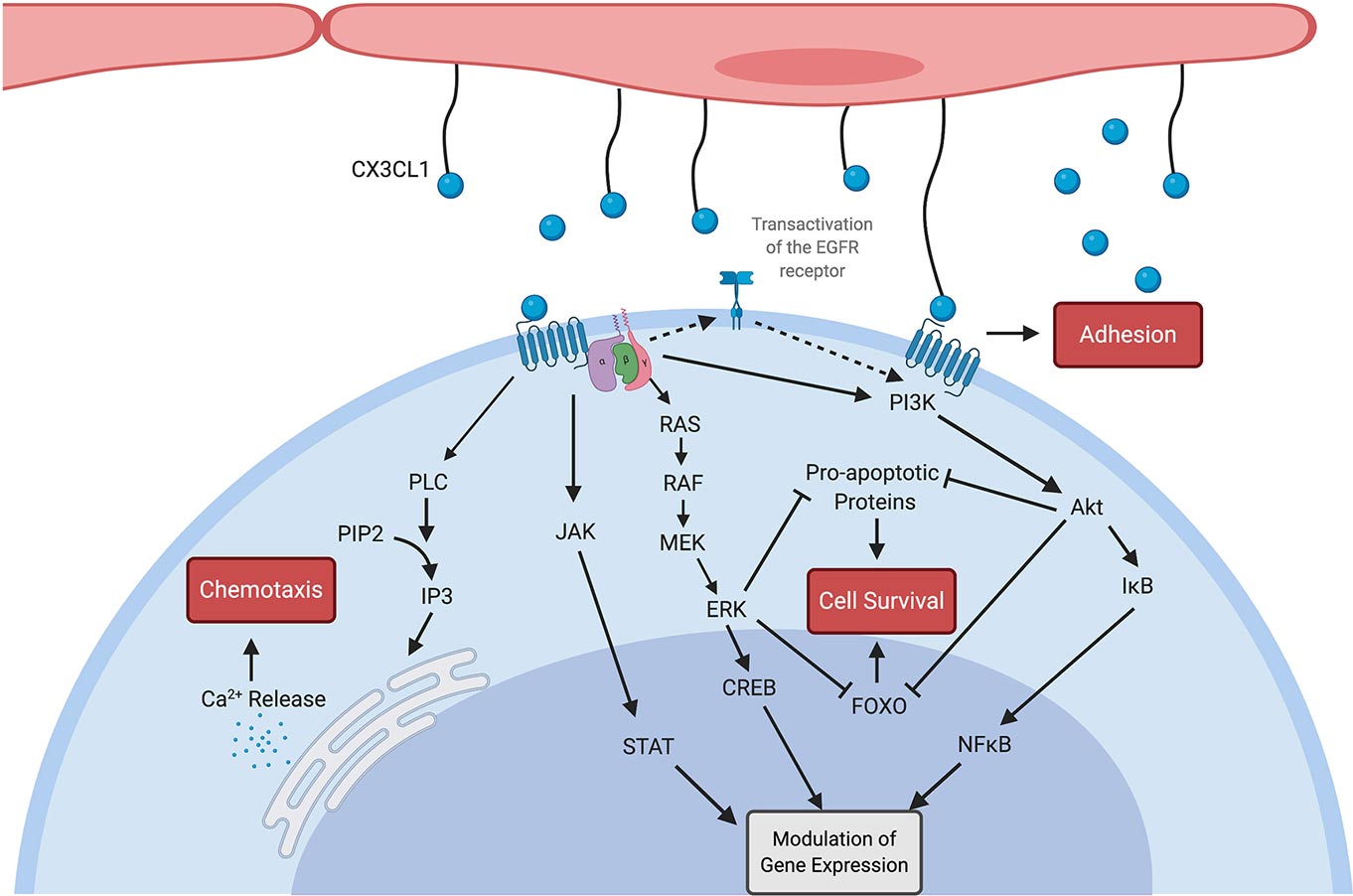What is CX3CL1 Protein?
The CX3CL1 protein, also known as Fractalkine, holds a profound impact on the area of cellular biology. Interestingly, this molecule serves as both an adhesion molecule and a chemoattractant, implying a dual functional capacity.
Discovery and Background
The discovery of CX3CL1 by Bazan and colleagues in 1997 marked a significant turning point in the understanding of cellular communication and embarked on a broader insight into the cellular chemotaxis. Since then, studies on CX3CL1's nature and function have escalated, effectively shedding light on some incompletely understood corners of life science.
Gene Locus and Protein Structure
The fractalkine or CX3CL1 gene is located at q13 on the human chromosome 16. The CX3CL1 protein structure stands out from other chemokines, giving way to its unique functionality. It comprises a chemokine domain linked to a long mucin-like stalk and a transmembrane domain, making it the only member of the CX3C chemokine family. The structure allows it to exist in two forms: a membrane-bound form that promotes cell adhesion and a soluble form that spurs chemotaxis.
Function of CX3CL1 Protein
The CX3CL1 protein, a potent chemoattractant for T cells and monocytes, plays a crucial role in mediating the interactions and adhesion of leukocytes to endothelial cells. Besides enticing leukocytes toward sites of inflammation, it promotes strong adhesion of cells even under flow conditions. This dual capacity comes from the unique structure of this molecule which permits it to function both as a cytokine and as an adhesion molecule.
CX3CL1 Protein Related Signal Pathway
The CX3CL1 protein interacts specifically with its singular receptor CX3CR1. This interaction sparks a signaling pathway that results in a variety of cellular responses. For instance, the CX3CL1-CX3CR1 axis is involved in the trafficking and positioning of immune cells during the immune response. Besides, it also plays a vital part in the transduction of survival or apoptotic signals in neurons, in enhancing monocyte survival, and in controlling the chemotaxis of cells.

Fig1. Fractalkine (CX3CL1) and Its Receptor CX3CR1
CX3CL1 Protein Related Diseases
Anomalies in the CX3CL1 protein and its associated signaling pathway have been implicated in a variety of diseases, especially those of an inflammatory nature. In cardiovascular diseases, including atherosclerosis, CX3CL1 expression is ramped up, diverting immune cells and leading to pathological processes. Similarly, in neurodegenerative diseases, such as Alzheimer's, alterations in the CX3CL1-CX3CR1 axis have been identified, contributing to neuroinflammation, neuronal dysfunction, and cognitive decline. CX3CL1 is also implicated in renal inflammation, cancer metastasis, and chronic inflammatory diseases.
CX3CL1 Protein's Applications in Biomedical
Given the prominent role of the CX3CL1 protein in inflammation and disease progression, its modulation has been a subject of keen interest in biomedical research. As a therapeutic target, blocking the function of this protein using antibodies or small molecule antagonists could be utilized to treat inflammation-based diseases such as atherosclerosis. Moreover, due to its involvement in various neurodegenerative diseases, modulation of the CX3CL1-CX3CR1 interaction might pose potential treatment strategies for conditions like Alzheimer's disease.
In conclusion, the CX3CL1 protein, by intertwining cellular adhesion and signalling, presents a distinctive role in biology and medicine. However, despite the profound understanding documented over the years, it still throws numerous challenges, rendering it a fascinating molecule for future research. Deciphering the diverse roles of this molecule could pave the way for potential breakthroughs in understanding and managing various diseases that still baffle contemporary medical science.
Our Featured Products
| Cat.No. | Product Name | Species | Source (Host) | Tag |
|---|---|---|---|---|
| CX3CL1-27741TH | Active Recombinant Human CX3CL1 protein, FLAG-tagged | Human | HEK293 | Flag |
| CX3CL1-051H | Active Recombinant Human CX3CL1 protein, His/Avi-tagged, Biotinylated | Human | HEK293 cells | His/Avi |
| CX3CL1-86H | Recombinant Human CX3CL1 protein, His-tagged | Human | HEK293 | His |
| CX3CL1-11712H | Recombinant Human CX3CL1, GST-tagged | Human | E.coli | GST |
| Cx3cl1-950M | Active Recombinant Mouse Cx3cl1 | Mouse | E.coli | N/A |
| CX3CL1-2092M | Recombinant Mouse CX3CL1 Protein, His (Fc)-Avi-tagged | Mouse | HEK293 | His (Fc)-Avi |
| CX3CL1-1342R | Recombinant Rat CX3CL1 Protein, His (Fc)-Avi-tagged | Rat | HEK293 | His (Fc)-Avi |
| CX3CL1-4319B | Recombinant Bovine CX3CL1 Protein | Bovine | Yeast | N/A |
Reference
- Cormican, S., & Griffin, M. D. (2021). Fractalkine (CX3CL1) and Its Receptor CX3CR1: A Promising Therapeutic Target in Chronic Kidney Disease? Frontiers in Immunology, 12, 664202. https://doi.org/10.3389/fimmu.2021.664202

